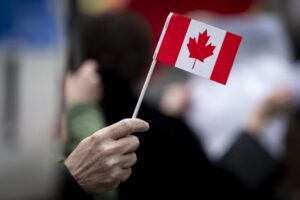
The Bank of Canada is continuing its quantitative tightening (QT) program and should wrap it up in 2025, deputy governor Toni Gravelle said on Thursday, while conceding the operation could end earlier.
Market operators and economists have speculated that recent funding pressures mean the central bank might soon put the brakes on QT, which aims to suck out the massive liquidity pumped into the financial system during the pandemic era.
But Gravelle made clear the bank intended to stick to the goal of reducing its settlement balances – liabilities which are put on the balance sheet as reserves – to a previously-announced range of between C$20 billion and C$60 billion.
“Based on the maturity profile of our assets, we should get to this range sometime in 2025,” Gravelle said in a speech in Toronto. The bank had earlier indicated that QT would run until the end of 2024 or the first half of 2025.
Under QT, the BoC has been letting bonds roll off its balance sheet without replacement as they mature, with a resulting decline in settlement balances. This process is also called the normalization of the balance sheet.
“The bottom line is the balance sheet normalization process is continuing … and we have tools to manage any temporary funding pressures that might come up along the way,” he said.
There is a risk QT could end earlier than expected, he said. Factors influencing such a move include persistent upward pressure on the overnight repo rate and broad-based funding pressures that go beyond the overnight repo market.
Shrinking settlement balances gives the bank more room for injecting money during times of economic crisis.
“If the economy slowed sharply, we would likely need to be adding monetary stimulus,” Gravelle said, adding that would mean rate cuts and an end to QT, at least temporarily.
Whenever QT ends, Gravelle said, the BoC would want to restore a more balanced mix of assets with a broader range of maturities, with more short-term assets than it currently holds.
Government of Canada bonds will still be its biggest asset type. The Bank will also hold government treasury bills and term repos but will no longer buy Canada Mortgage Bonds







